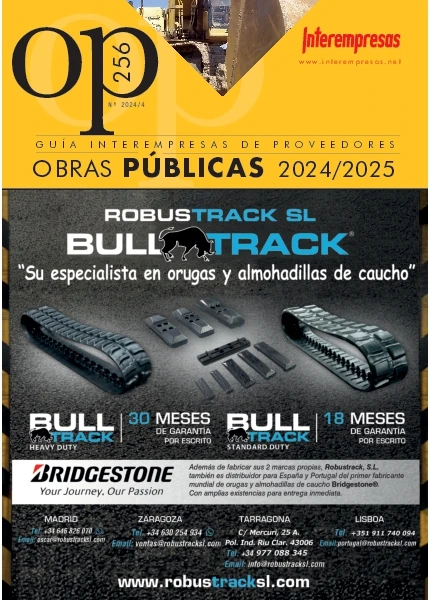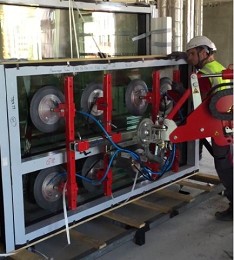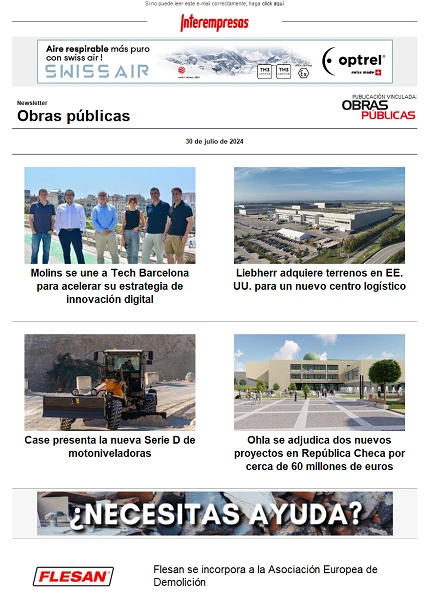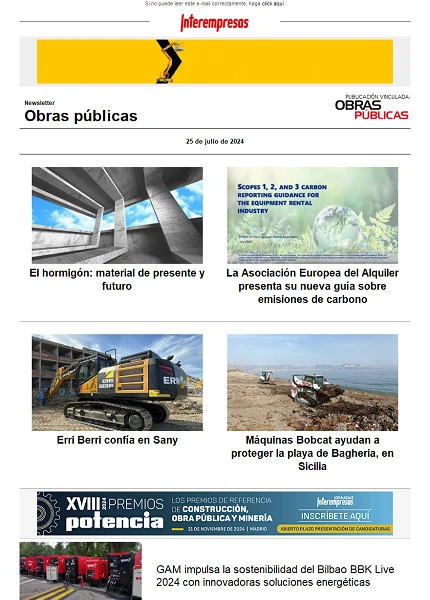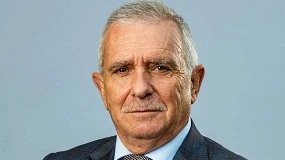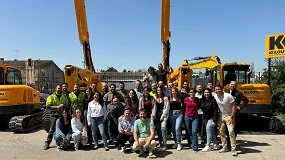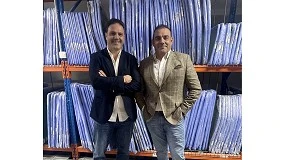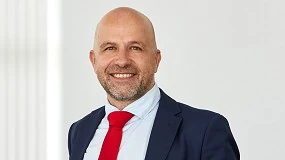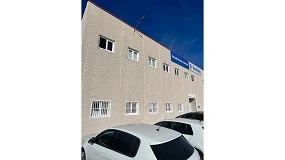Interview with Jacobo Díaz Pineda, director-general of the Spanish Road Association (AEC)
May 19, 2010
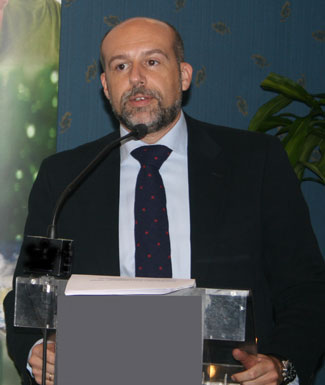
What kind of asphalt cover our roads?
There are basically two types of pavements: bituminous mixtures, which are the most common today, and concrete, which are again gaining ground after a few years which just have been employed in the construction of roads.
Do and are different from the from 20 years ago?
Until a few time ago, the design of the firm was based, among other variables, in the cost, expected durability, availability of materials, the climatic conditions of the area or previous experiences with certain products and technologies. Currently, the firm must provide, in addition, values added to the society: security and the respect for the environment. For this reason, research in the use of new components and the recycling of materials, as the dust of tyre, which contribute to the improvement of the safety of road users and, of course, to the protection of the environment.
What variety of asphalt is the most advanced technologically? What it is?
At the moment are being developed important research in the field of the firm with very advanced technical solutions. Them, include, without a doubt, the Phoenix project (strategic research on safe and sustainable roads).
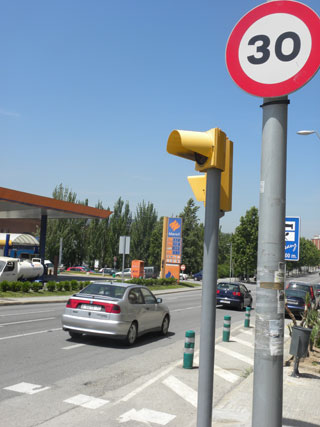
What it is?
This project is developed in 12 lines of research as innovative as the study of ways to capture and store the thermal energy of the sun which are roads in order to recover this energy for later use in domestic or industrial uses, or, for example, the development of active - microscopic particles - nanomaterials in the reduction of emissions of vehicles. It also investigates the production of new bituminous mixtures obtained under procedures that do not harm the environment.
In fact, products based on a catalyst that, used in cement firm are already commercialized, it is capable of reducing the level of organic pollutants and inorganic present in the air, as well as having autolimpiadoras properties that contribute to paving the ability to decontaminate.
If I had to make an international ranking which classification to countries depending on the quality of their roads, where are you place to Spain?
Historically, Germany has been the country with more miles of highways and main roads in Europe. However, in the last 15 or 20 years this situation has changed and Spain has become the first place with about 15,000 kilometres of high-capacity network. In this sense, the Spanish art motorways have nothing to envy to the most modern road infrastructure in the world. Moreover, our network of high capacity possibly is above the average of European countries. It is true, and we must not forget, that have a long way to go in the field of conservation, primarily in the secondary network. In this area, and in the international rankings that you ask us, perhaps it could be as a reference to France.
According to Díaz Pineda, the three pillars of road safety are the road, the design of vehicles and the behavior of users. The improvement in any of these items is reflected in "a reduction of the number of accidents and the consequences thereof, and therefore, in one improves rates of accidents". As regards vehicles, it seems clear that advances have been many and very effective. Also in regards awareness of drivers. For both, and despite the many improvements achieved, "perhaps the infrastructure element that most can be exploited now so that accidents in our country can continue to decline", says the director of the ACS.
Are our roads safe?
The data speaks for itself: we have fulfilled the commitment of the European Commission to reduce mortality in road 50% by 2010. According to recent data published by the Directorate General of traffic, between 2003 and 2009 the number of deaths by traffic accident has been 11 people a day to just 5, which means that every year have been killed in road 2,190 fewer people.
Our indexes of both accidents of dangerous (IP) - which relates the number of accidents with the volume of traffic, as the mortality (IM) - who died in relation to the volume of traffic - have been falling in a sustainable manner in recent years to achieve the success that today we welcome everyone.
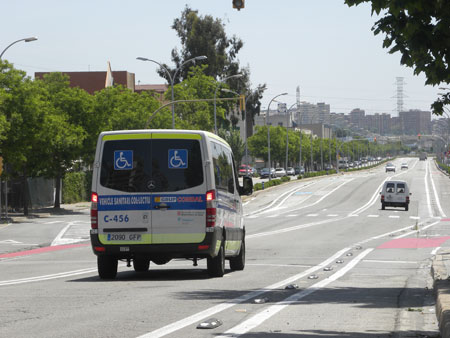
Then, the measures that have been taking are giving result.
Yes, no doubt. The awareness of society during the past few years has been a decisive factor in the trend of reduction of victims, as well as the evolution of passive vehicle safety systems. However, if you want that this trend is stable as long as possible, it is necessary to continue to invest in road maintenance and research and development to improve the management of traffic and safety.
Talking about measures, do you think of the card points?
The introduction of the driving licence by points in Spain nearly four years ago has led to a change of approach to notable in the field of road safety. As it happened in their day in France and Germany, with reforms like this our country shows that the right to drive is not only a right that society gives "of life" to the citizens, but a social credit toIf not used properly and according to established standards, it has to be withdrawn to the individual possessing it. Perhaps for this reason, the measure has been very effective. His role in the achievement of the objective proposed by the European Commission to reduce mortality by 50% by 2010 has undoubtedly been decisive.
In any case, apart from his undoubted success, must be borne in mind that the points driving licence constitutes a measure which forms part of a comprehensive package of initiatives, including the reform of the Criminal Code relating to traffic, awareness-raising and sensitization campaigns, the installation of new radars of speed, controls blood alcohol level, or, in the field of infrastructure, the duplication of roads or the creation of bypasses among others. And that all of these are as a whole, which have permitted to the excellent results that we all know.
What can industry do to reduce the rate of emissions into the atmosphere?
The protection of the environment has become so important in the society that has become a key factor for development and the competitiveness of enterprises. The road sector is no stranger to this social demand and much of the investigations carried out van designed to lessen environmental impact. We have already cited some examples, but there's more. For example, the incorporation into the paving of new components that absorb the gases from the combustion is under investigation. Special care is given to the life cycle of the firm, from the extraction of the raw material to sunset in service and maintenance of the same, and is taught drivers efficient driving practices seeking a reduction in emissions of polluting gases into the atmosphere.
The AEC also performs extensive work in this area. Among others, has carried out studies on the reduction of emissions of gases into the atmosphere through the planting of carbon sinks. Likewise, he is developing a methodology to carry out environmental audits of roads whose objective is the improvement of the environmental quality of road infrastructure.
Did find you right solution launched in Barcelona, which limits the speed to 80 km/h?
In my opinion, it must not dismiss the latest technologies applied to transport based on the ITS (Intelligent Transport Systems) systems, which offer many advantages and are not always based on the reduction of the speed of movement. We are more supporters of varying speeds depending on certain factors like the intensity of traffic, the lighting (night driving) or weather conditions.
One of the most important challenges is the preservation of the current array of road infrastructure. How to face this task sector?
At a time in which all experts agree that, after the initial impact of the points driving licence and the hardening of the Criminal Code relating to traffic, every time there is less scope to reduce accidents, conservation policies should fill that space for safer roads.
The World Bank recommends investing in conservation 2% of the value of the road network in each country. In Spain we are nowhere near attaining this figure, however, the economic situation facing our country has led to cuts in investments at all levels, and we fear that the maintenance of road infrastructure will not be alien to this fact.
It is essential that society is aware that investment in roads is a social spending, and that road infrastructure provide the backbone of the territory as does any other mode of transport, close public services to citizens and encourage the economic development of the countryby which the maintenance of our road heritage seems essential not only from the point of view of security, but also from the competitiveness of enterprises and the territorial user.

Lisbon, km 0
The world of the Federation International Congress of roads (IRF) is, arguably, the most important international meeting of the road sector. This year, Lisbon will host the event between 25 and 28 May. "In 1993, the AEC, as a Spanish Member of the IRF, organized in Madrid this Congress." "Since that year, the Spanish as the official language of the meeting was established, and since then, the Spanish presence has always been very significant," explains the director of the Association.
This year, at the 16th World Congress of the IRF are repeated high figures of national participation. A delegation composed of more than one hundred professionals, almost 70 presentations from Spanish technicians who focus on very diverse issues such as road safety, the environment and new technologies, among others will be presented in Lisbon.
To this must be added a national Pavilion of 400 square meters which will include prominent public entities and private Spanish road sector companies. All of them will have the opportunity to showcase their newest projects before an audience that widely exceed the thousand of visitors in the space.
As it is already customary since 1993, the presence of the Spanish delegation is coordinated by the AEC. "Once more, gets highlighted the commitment of the professionals in our country by a sector of the public work that must be fulfilled an important role in the coming years, especially in a particularly delicate situation from an economic point of view as the current"says Díaz Pineda.
Tell us about the black spots on our roads. To why not they eradicate?
At the moment, I would say that all the autonomous communities of our country, as well as the Directorate General of highways of the Ministry of development, include the removal of sections of concentration of accidents (TCA) in their current plans of roads. All Governments are making a considerable effort in this aspect, which however, does not always have the desired success. Probably because not all black spots have their explanation in an exclusive problem of the infrastructure.
What is the work of the AEC in this regard?
In this context, and in order to gain a better understanding of how the characteristics of road influence in the accident, the Association established some years ago a new concept: the 'white sections'. In contrast with 'black spots', it's a significant length stretches in which for at least 5 consecutive years there have been no fatal accidents.
The objective of this project, to be now, hand in hand with the AEC, set up also in Europe, is to identify the characteristics of design, equipment and membership of the traffic that converted to a stretch of road in 'safe'in order to apply these criteria in areas with problems of road safety.
Intelligent transport systems, commonly known as ITS, encompass a set of technological solutions for telecommunications and information technology developed with the aim of improving the safety and fluidity of transport.
Apart from its more known functions as the improvement in the management of fleets or electronic toll, Díaz Pineda desataca that "ITS play an important role in the improvement of road safety". For example, it is working on the implementation of the e-call, an emergency system in cars, in case of accident or it breaks down, it automatically activates a signal alerts the necessary medical or mechanical services. To this end, both the vehicles concerned and the aid on road must have receptors and appropriate browsers. "Thus reducing the intermediaries in the chain of rescue and, consequently, the time for help", explains the director of the ACS.
Other applications of ITS are aimed at helping the driving: intelligent speed adaptation according to the characteristics of the road or the guidance of routes.
Applications are also being developed and to increase security and timeliness of the services of buses, with the possibility of reporting in real-time to the user for any delay or unexpected.
Ultimately, we can say that these systems make transport more efficient and effective, as well as safer and less aggressive to the environment. Moreover, they improve the quality and the reliability of the information about the location of vehicles and provide new and better services for users of the road.
Tell us about our road signs and signals. Why do we not respect the signals?
Road signs and signals must transmit the driver information on the road that is touring with long enough so that it can make the necessary manoeuvres safely. In most cases drivers do not respect signs because they don't agree, because it is not easily readable or, even, according to some surveys conducted recently, because they do not know its meaning.
Therefore, signage, as well as clear, simple and uniform, must meet other requirements. For example, it must be visible from two perspectives. On the one hand, preventing any obstacle to cover them. On the other, replacing them when their deterioration prevents to properly fulfil its function. Simplify the message they transmit can be another field of study. And above all, it must work in a signal that is credible, because otherwise users not respect her.
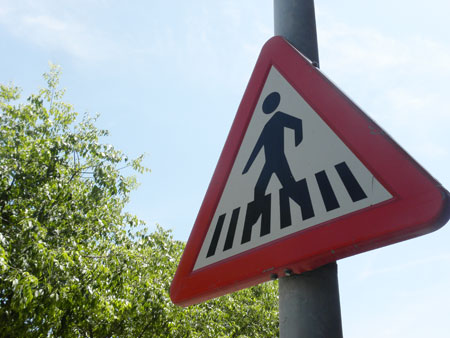
How it is situated at Spain in the field of r & d?
It was an indisputable fact that research in Spain would need more resources for their development and growth, so that there is a loss of competitiveness in relation to other industrialized countries such as Germany, France, United Kingdom, or Holland. However, we have excellent researchers and very good results despite the existing media. In addition, at road level, the picture is very positive.
In what sense?
At the moment are developing large research projects with international scope. In addition to the Phoenix project, referred to above, it is worth mentioning the Marta project (mobility and automotive transport advanced networks), which proposes a system of communication in real-time between vehicles and traffic centres and emergency services. Or the projects Dante (development and application of intelligent traffic management systems that take into account the influence of the human factor and the different types of users who traverse the pathways) and Oasis (highways safe, smart and sustainable operation)promoted by a consortium of companies and institutions dedicated to the exploitation and research on roads in which the latter part the AEC.
Earlier this year created the Spanish technological platform of road, entity which you preside. What is its purpose?
The newly created platform technology Spanish road (PTC) aims to become an undisputed reference to all road authorities who develop r & d of major projects, from business and technology centres to public bodies and universities. Its mission will be to develop a strategic agenda that identifies the lines of research that will shape the course of the sector in the short, medium and long term.
To this end, this platform intends to revitalize the existing channels of communication between all of those entities. In this way, it will be possible to boost a sector which must exercise an important role in the increase of GDP.
And through what activities is intended to revitalize these channels?
The work of the PTC will articulate around sectoral technical conferences, open forums focused on the exchange of experiences and projects or activities of cooperation between organizations in order to participate in coordination in important international lines of research and development. This framed in several areas of work: road safety, environment, finance and taxation, service quality and road of the future.
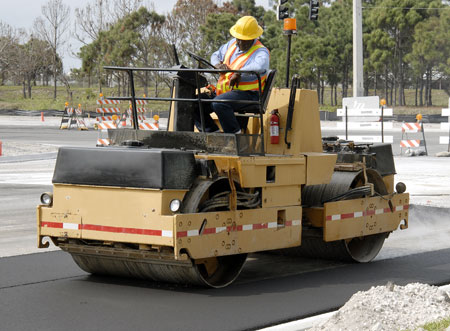
Initial phase
From the moment that there is need to build a new road - or a new section of road - until it enters service, is a series of complex phases of work that begins with planning studieswhich analyses the current situation and future of the area in which you want to undertake the implementation of the road. It is common that, to this end, articulation plans of roads, either sectoral or well integrated with other broader (transport or infrastructure).
Feasibility studies
After this initial phase, carried out feasibility studies. In them, and depending on the physical, environmental, sociological and economic data in the affected area, there are various technically feasible solutions and analysed their advantages and disadvantages. Then opens a process of citizen participation that seeks to achieve a true consensus between society and the Administration before committing a certain public funds.
Environmental impact assessment
This phase is followed by the very important, environmental impact assessment that can veto any of the options raised in the previous studies, including all. In addition, the impact assessment can impose some requirements of a technical nature to reduce the negative effects of the action in the natural environment. These requirements should be included compulsorily in the project.
Drafting of the preliminary draft
At this point begins the drafting of the draft, who studies raised, shape solutions that can achieve the optimum. The preliminary draft can serve as basis in the project and contests as well as in the majority of actions carried out by grant document.
Drafting of the
Later made the project, which must contain a full technical and economic description of the action to be developed. With him, opens the door for the start of construction; explanación, drainage and drainage works; construction works of step, bridges, tunnels, viaducts, etc.; Constitution of the firm; Road allowance - road markings, vertical signs, markers, barriers of containment, lighting, plantations, screens, and so on, until its final configuration.



